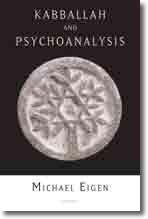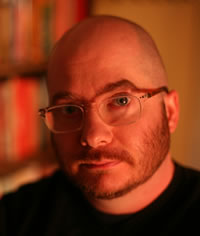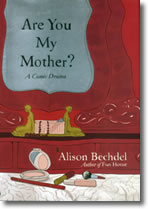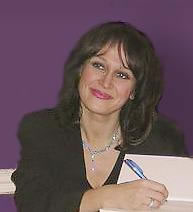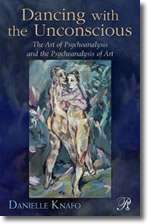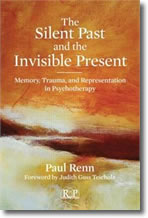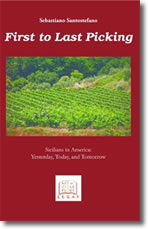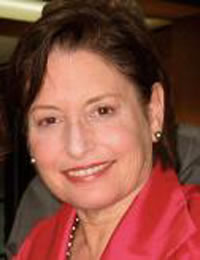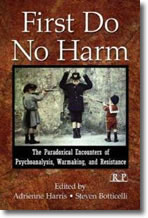 |
The International Association for Relational Psychoanalysis and Psychotherapy |
|
|
|
|
Michael Eigen Kabbalah and Psychoanalysis is an amplification of two seminars I did on invitation of the NYU Postdoctoral Contemplative Studies Project in 2010 and 2011. Following is a brief description. It is published by Karnac Books. Wilfred Bion once said, "I use the Kabbalah as a framework for psychoanalysis. "Both are preoccupied with catastrophe and faith, infinity and intensity of experience, shatter and growth of being that supports dimensions which sensitivity opens. Both are preoccupied with ontological implications of the Unknown and the importance of emotional life." This work is a psychospiritual adventure touching the places Kabbalah and psychoanalysis give something to each other. Michael Eigen uses aspects of Bion, Winnicott, Akivah, Luria and Nachman (and more) as colors on a palette to open realities for growth of experience. Bion called faith "the psychoanalytic attitude" and Eigen here explores creative, paradoxical, multidimensional aspects of faith. Eigen previously wrote of psychoanalysis as a form of prayer in The Psychoanalytic Mystic. In Kabbalah and Psychoanalysis he writes of creative faith. Sessions as crucibles in which diverse currents of personality mix in new ways, alchemy or soul chemistry perhaps, or simply homage to our embryonic nature which responds to the breath of feeling moment to moment. This book brings out ways that a sense of infinity interweaves with everyday life, at the same time it faces the destructiveness of life and human nature and attempts to work with it. "Lucid analysis and empathic listening to the longing heart. Daring parallels between Kabbalah and the most complex psychoanalytic theories today." - Admiel Kosman "Michael Eigen has done an important service in presenting a highly articulate and readily comprehensible rendition of Bion's mystical venture and its correlations in the Kabbalah. A beautiful, must-read book." - James Grotstein |
|
|
Griffin Hansbury In the first meeting of the first class on Freud that I took in my psychoanalytic training, the instructor told us, "If you can follow Freud, you can follow a patient." He talked about Freud's writing almost like a free associative process, in which Freud made statements, then undid them, turned down side roads and cul-de-sacs, all in the business of figuring out the thing he was creating. In acclaimed lesbian cartoonist Alison Bechdel's graphic memoir Are You My Mother? the author performs a similar maneuver, but more nakedly so, as she reveals to the reader her creative process—of writing the book, and of becoming a person with her own subjectivity. With text and drawings that move back and forth through time and various voices, Bechdel takes the reader on a psychoanalytic journey as she endeavors to make sense of her mother and the relationship between them. Each chapter opens with a dream and weaves together analytic theory and the author's own history to create a whole that feels like a mind working hard to make meaning—and to contain multitudes. On a single two-page spread, we see Bechdel's young mother, thwarted in her own creative ambitions, dully preparing to feed the author-as-baby. Simultaneously we're treated to a section of Winnicott's 1949 paper "Hate in the Countertransference," while on the facing page, an assertive teenage Bechdel verbally spars with her mother in a suburban kitchen of the past. Time slips and elides. We hear from Virginia Woolf, Alice Miller, Adrienne Rich, Dr. Seuss. Bechdel draws herself sitting and lying on analytic couches, in the presence of good-enough mother analysts who develop their patient's capacity to use them as objects. At the book's beginning, Bechdel hopes that Are You My Mother? will do for her what To the Lighthouse did for Woolf—detoxify and diminish the maternal introject that looms large inside. The book, perhaps like most artistic products, is an anxiously aggressive attempt to destroy the mother, while also an attempt to attach. The tension held by the reader is the question we all harbor: Will Mother survive it? Contact: Griffin Hansbury http://griffinhansbury.com/ |
|
|
|
|
Danielle Knafo In writing and lecturing over the past two decades on the relationship between psychoanalysis and art, Dr. Danielle Knafo has demonstrated the many ways in which these two disciplines inform and illuminate each other. This book continues that discussion, emphasizing how the creative process in psychoanalysis and art utilizes the unconscious in a quest for transformation and healing. Part one of the book presents case studies to show how free association, transference, dream work, regression, altered states of consciousness, trauma, and solitude function as creative tools for analyst, patient, and artist. Knafo uses the metaphor of dance to describe therapeutic action, the back-and-forth movement between therapist and patient, past and present, containment and release, and conscious and unconscious thought. The analytic couple is both artist and medium, and the dance they do together is a dynamic representation of the boundless creativity of the unconscious mind. Part two of the book offers in-depth studies of several artists to illustrate how they employ various media for self-expression and self-creation. Knafo shows how artists, though mostly creating in solitude, are frequently engaged in significant relational processes that attempt rapprochement with internalized objects and repair of psychic injury. Dancing with the Unconscious expands the theoretical dimension of psychoanalysis while offering the clinician ways to realize greater creativity in work with patients. "Danielle Knafo consolidates her extensive knowledge of art, artists, and creativity to invite the reader into a deeper understanding of psychoanalysis as a creative endeavor. Wedding an evocative and lyrical prose style with a deep and penetrating understanding of the human condition and imagination, Knafo's voice rings clearly throughout the text, reminding us that psychoanalysis becomes transformative to the extent that it is practiced creatively." - Marilyn Charles, Ph.D., Austen Riggs Center, and author, Working with Trauma: Lessons from Bion and Lacan (Jason Aronson, 2012) Link to book: http://www.routledge.com/books/details/9780415881012 |
|
|
Paul Renn This book is published in the Relational Perspectives Book Series, co-edited by Lewis Aron and Adrienne Harris. The themes that unify the book reflect my interests in memory, child development, neuroscience, attachment theory, traumatology, affect regulation, intimate violence, the continuity of experience across the life cycle, and the process of change. As the title of the book suggests, I am particularly interested in the silent, invisible processes deriving from the past that maintain non optimal ways of experiencing and relating in the present, as these strike me as posing eminently pertinent questions for psychoanalysis and psychotherapy. In exploring these themes, I draw on a wide range of research, integrating empirical findings with a hermeneutic sensibility. In my view, relational psychoanalysis is well placed to incorporate the findings emerging from related disciplines into a clinical model that integrates such data with the current emphasis on intersubjectivity, trauma, dissociation, mentalization, nonlinear dynamic systems theory, and mutual enactments. In presenting such a therapeutic model, I argue that a neuroscientific understanding of the dynamic nature of memory processes, and of the way in which the implicit and explicit memory systems function and interact, is salient to a concomitant understanding of personality development and therapeutic action. These interests have emerged during some 20 years of clinical practice and reflect a paradigmatic shift in psychoanalytic thinking about clinical work and the process of change. Whereas earlier clinical models emphasized a largely verbal, interpretive technique in the explicit domain, newer models focus on a non symbolic, affective understanding of communication in the implicit/enactive domain. I argue that therapeutic change consists of a dual process and needs to proceed in both of these domains. Details and reviews of the book can be accessed via the following link: http://www.psychoanalysisarena.com/the-silent-past-and-the-invisible-present-9780415898591 |
|
|
|
|
Sebastiano Santostefano This novel is based upon the author's experiences, and invites the reader to enter and participate in the lives of Sicilian boys harvesting tobacco leaves in the summer of 1943. The content illustrates that what exists within a person's inner self grows from experiences a person had with family, relatives and neighborhood, and also from the history of experiences a person's family had with ancestors. In addition, the novel describes and illustrates the family rules Sicilians brought to the United States that define and guide the dialectical interactions among family members and relatives. The book can be purchased from : Legas Press, P.O. Box 149, Mineola, New York 11501, USA Sebastiano Santostefano |
|
|
Joan Sarnat I would like to bring the members' attention to the publication of a recent article of mine. In this article I extend work done by Mary Gail Frawley-O'Dea and myself in our book, "The Supervisory Relationship: A Contemporary Psychodynamic Approach" (Guilford, 2001), in which we elaborated a relational model of psychoanalytic supervision. In my article I make the case that there is a good deal of evidence, including evidence from neuroscience research, that a relational model of supervision is pedagogcially superior to less experiential and more didactic approaches. The article is: "Supervising Psychoanalytic Psychotherapy: Present Knowledge, Pressing Needs, Future Possibilities" (Journal of Contemporary Psychotherapy, 2012 - Volume 42, Issue 3 Page 151-160) The paper is also available electronically on SpringerLink: Joan Sarnat, Ph.D., ABPP
|
|
|
|
|
Peter Shabad Nancy Goodman and Marilyn Meyers have edited a deeply heartfelt, ethically necessary volume consisting of essays from psychoanalytic therapists who describe the personal resonances of the Holocaust in their lives. Taken together, these writings provide a collective power of witnessing as memory that begins to bring the forgotten experiences of the Holocaust's murdered victims into a containing circle of human belonging. The collective power of witnessing derives from a fearless willingness to not forget, to know, and to recognize the pain, grief, and despair of the victims. The book is divided into five sections: 1) "A Triptych to the Power of Witnessing; 2) Reflections; 3) Reverberations; 4)Traces; and 5) Links. The first section uses the connecting link of traveling back in time, and specifically Nancy Goodman's metaphor of "The Anti-Train," as a vehicle through which willing witnesses may enter into the horrific experiences of Holocaust victims. The chapters of the second section, "Reflections," reveal directly how personal experiences of the Holocaust have penetrated deeply into the lives of the authors. The writers of the third section, "Reverberations," recount how the trauma of the Holocaust has been transmitted to survivors across generations. The fourth section, "Traces," reveals how different art forms are able to provide resonances of recognition of the unspeakable intensity of the Holocaust's horrors. The final section, "Links," describes how the power of witnessing may be extended to other mass traumas and individual traumas that many therapists confront in their work. Perhaps most importantly to my mind, the uniquely personal and emotionally evocative narratives of the different authors in this book provide an individual identity to victims who otherwise become lost in the abstraction of unfathomably monstrous numbers of Holocaust dead. Through memory and recognition, the power of witnessing lends a shred of dignity and meaning to individual stories among the countless voices of the dead that were silenced so ignominiously. Nancy Goodman and Marilyn Meyers have provided a great ethical and psychological service in addressing questions of knowing and not knowing the horror of the Holocaust, and the "evils" of life in general. The willingness of a witness to incur the burden of knowing is a courageous defiance of the weighty sense of helplessness that comes with being unable to fix what one comes to know in absentia. As human beings, however, we all have an ethical responsibility to the dead to not flinch from looking at the darkest underbelly of the human condition and letting its victims fall into the dustbin of anonymity, but to emphatically recognize that each individual person matters as a member who belongs to the human race. Link for the book: http://www.thepowerofwitnessing.com Contact: marilynbmeyers@gmail.com |
|
|
Karen Weisbard Adrienne Harris and Steven Botticelli offer a compilation on the nature and function of interconnectedness, mutual recognition, and multiplicity for subjectivity and relatedness. Eighteen analytic writers describe with variety, passion, and personal voice what happens when the essentials to a full human life are attacked, destroyed, and rendered meaningless by acts of war and the discourses that surround it. In thinking about "First Do No Harm", one is left to conclude of its impossibility. There is no first, there is only ongoingness. In every situation of possible healing, there is the possibility of harm. Hope emerges in this volume by first directing attention to our failures. Failures of society to remember, contain, and care about the horrors that have been done and are being done to its civilians. Failures to name with truth and accuracy the violence that is being perpetuated against each other. Failures to take responsibility for social and political discourses that shame and blame those who are suffering. Failures at recognition of differences and pain. Failures to acknowledge our interdependence. Failures to treat other human beings as just that–other human beings. Relational psychoanalysis has a vital role to play in righting these wrongs. We can move away from the notion that we are self-contained, delineated human beings toward a notion of connection with something greater than ourselves. Community acts as a third pillar, and a "moral third" (Benjamin, 2011) to an individual psychology. Our aspiration for mutual recognition is made possible by these appeals to "a third". "First Do No Harm" offers us a way to acknowledge our failures and our vulnerabilities. It offers us a way to recognize ourselves in the harm being done and a way to heal that pain. Link to book: http://www.apadivisions.org/division-39/publications/reviews/plea-for-humanity.aspx Contact: Karen Weisbard, Psy.D. |
|
|
|
|
Brent Willock Surprisingly little has been written about this important topic which is extremely significant not only in the clinical situation but also throughout life. Practitioners, theoreticians, and clinical investigators will find that this superb collection goes a long way toward remedying this shortcoming in our literature. The broad range of fascinating topics includes: psychoanalytic and existential perspectives on loneliness in life and treatment; new forms of loneliness in cyberspace; yearning and its vicissitudes; loneliness through the life cycle; treating the difficult lonely patient; healing the traumatized analyst's loneliness; loneliness and yearning in the sociocultural surround; yearning for nonhuman connections; expanding our theories to better understand and treat loneliness. After reading this book, you will have an even better understanding of your patients and the clinical task than you currently have. |
|
|


